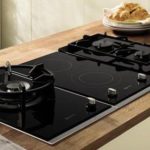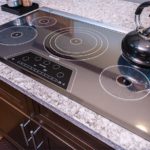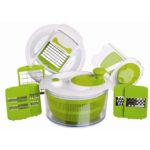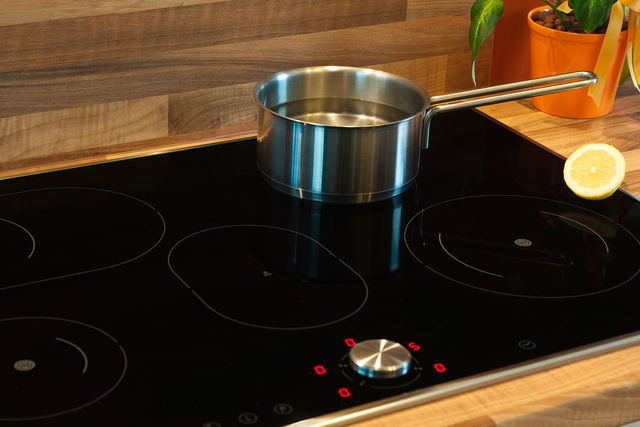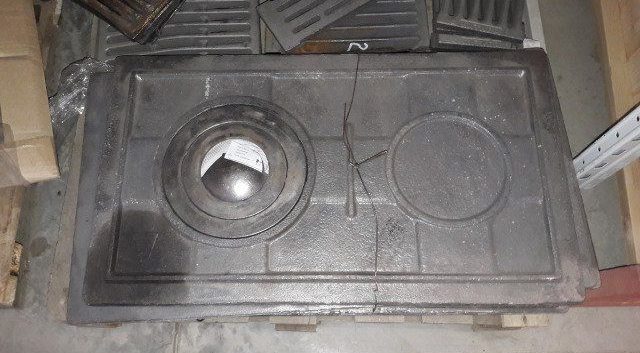Types of electric stoves
If a hob, a dependent oven and, which is a little less common, a section for storing utensils are built into one housing, we are talking about a full-fledged electric stove. Different models of such household appliances may differ not only in size and number of functions.
The content of the article
Types of electric stoves
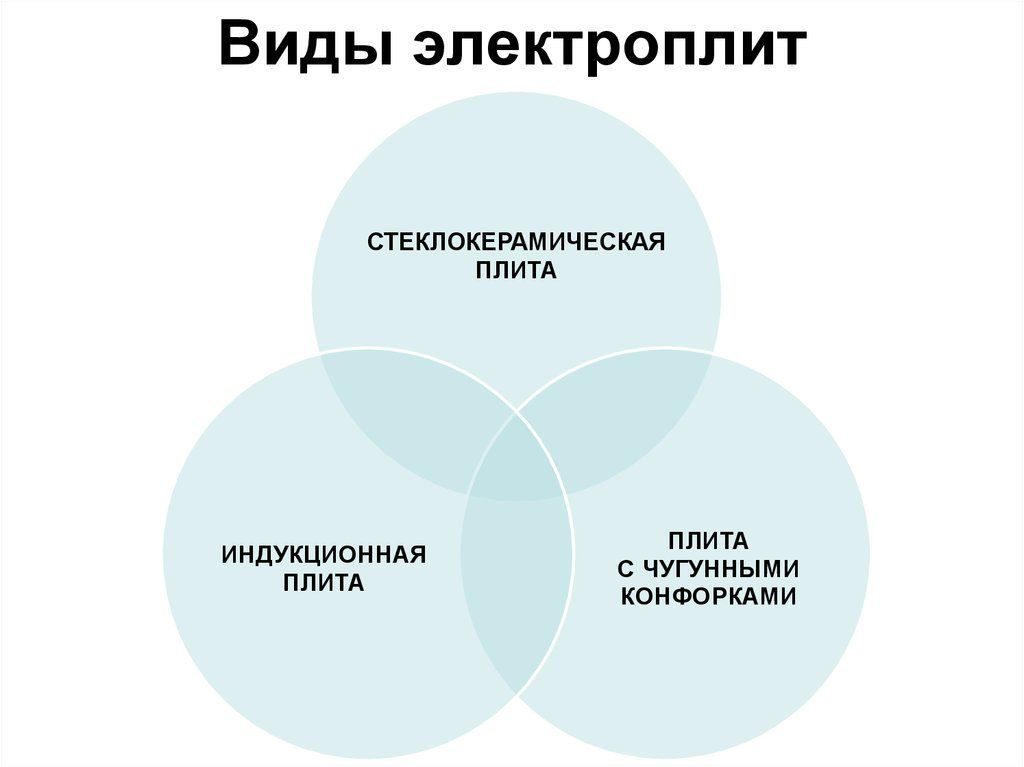
The device can be divided into three units: a common control panel, a hob and an oven. The first comes in several types.
- Touch - the device is controlled by touching sensitive buttons or by selecting the necessary items from the menu on the display.
- Mechanical - the mode is set by turning the lever. There are recessed or non-recessed variations. In the first case, it is possible to “press” the control mechanism inside the panel, which greatly simplifies its maintenance. Non-recessed ones do not have this option.
- Electromechanical - button control.
- Combined - a combination of two or more options from the list.
With the hob, things are a little more complicated. Based on the principle of operation of the device and the main design differences, there are 4 types of electric stoves.
Standard
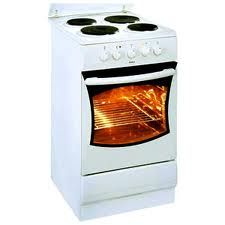 The first to appear on the market were surfaces equipped with a high-resistance current conductor. The heating element is hidden under a cast iron “pancake” or the burner is presented in the form of a closed spiral - a heating element.The undeniable advantage of the model range is its low cost. The disadvantages include greater inertia (slow heating and cooling) and, accordingly, a high level of energy consumption.
The first to appear on the market were surfaces equipped with a high-resistance current conductor. The heating element is hidden under a cast iron “pancake” or the burner is presented in the form of a closed spiral - a heating element.The undeniable advantage of the model range is its low cost. The disadvantages include greater inertia (slow heating and cooling) and, accordingly, a high level of energy consumption.
The surface can be made of stainless steel or covered with heat-resistant enamel. Steel is aesthetically pleasing, impact-resistant and durable. But it requires regular wiping, since the smallest dirt is clearly visible on it - even traces of evaporated droplets of water. Enamel is more practical in this regard, but the use of abrasives when cleaning it leads to the appearance of unpresentable abrasions. And an accidentally dropped spoon can lead to the formation of a chip, which will soon begin to show through with rust or dirt accumulated in it.
Glass ceramics
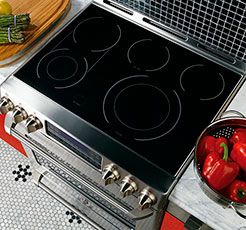 Similar to a traditional electric stove in operating principle, but strikingly different in coating and price, the glass-ceramic hob is also not without its advantages and disadvantages. Among the first things that deserve attention are the originality of design solutions. It will emphasize the sophistication of the kitchen interior.
Similar to a traditional electric stove in operating principle, but strikingly different in coating and price, the glass-ceramic hob is also not without its advantages and disadvantages. Among the first things that deserve attention are the originality of design solutions. It will emphasize the sophistication of the kitchen interior.
Glass ceramics require regular maintenance using special products.
Glass ceramics are durable when handled correctly. But milk that regularly escapes, dishes with an uneven bottom, and an accidental pinpoint impact can quickly render an expensive stove unusable. Such devices are more economical than traditional ones, but still the level of energy consumption is noticeably reflected in electricity bills.
Halogen
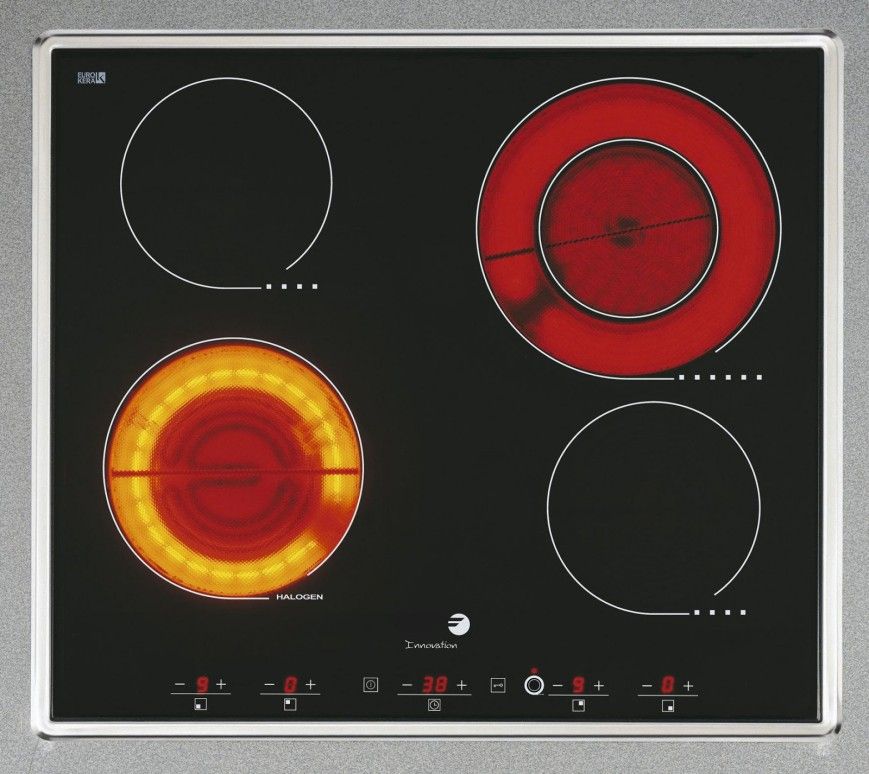 So named after the type of heating elements represented by intense halogen lamps. Since they are a type of glass-ceramic plates, the advantages remain the same:
So named after the type of heating elements represented by intense halogen lamps. Since they are a type of glass-ceramic plates, the advantages remain the same:
- acceptable speed of heating the dishes;
- average power consumption;
- aesthetics, ease of maintenance and durability.
The most significant disadvantages of such equipment are the high cost of equipment and expensive maintenance. It is for this reason that they were never able to win the hearts of most culinary experts.
Induction
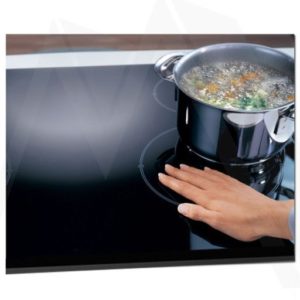 This is the case when the high cost of an electric stove is justified by the same level of safety. The stove simply does not heat up, because the principle of its operation is based on the reproduction of current in a closed circuit. Simply put: there is no pan on the burner or the cookware is too small - the surface does not work. And the coating of a working appliance heats up only from the dishes. This means that the stove will only be hot under the pan, but not next to it. So it became much more difficult to get burned while cooking.
This is the case when the high cost of an electric stove is justified by the same level of safety. The stove simply does not heat up, because the principle of its operation is based on the reproduction of current in a closed circuit. Simply put: there is no pan on the burner or the cookware is too small - the surface does not work. And the coating of a working appliance heats up only from the dishes. This means that the stove will only be hot under the pan, but not next to it. So it became much more difficult to get burned while cooking.
Another plus follows from this: a decent level of efficiency. There is no “idle” operation, electricity is not wasted on heating the burners.
The efficiency of an induction cooker is at least 90%, while other options are “pleasant” with an indicator of 30-60%.
Disadvantages include the fragility of the slab coating and expensive repairs. But if treated with care, the equipment will please its owners for a long time. Including relatively low electricity bills.
By oven type
One of the advantages of purchasing a full-fledged electric stove is that the cost of a combined hob and oven is significantly lower than the prices of these same devices separately.
True, the size of the oven directly depends on the dimensions of the stove, and its functionality is often somewhat limited. Especially when compared with independent equipment. But a standard oven is quite enough to meet the needs of a family of 2-4 people.
With electric oven
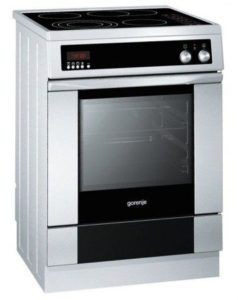 The most logical solution: the same type of energy consumption as the hob. The cost of the stove depends on the number of oven options. Like independent options, grill options, convection and other nice little things are possible.
The most logical solution: the same type of energy consumption as the hob. The cost of the stove depends on the number of oven options. Like independent options, grill options, convection and other nice little things are possible.
The advantages include a common power line with the hob. The disadvantages are a fairly high level of energy consumption.
Combined
An economical solution for those who are not looking for easy ways. The electric stove is combined with a gas oven. Moreover, some of the burners can also be gas, which is useful in case of frequent power outages.
When purchasing a combined electric stove, it is important to pay attention to the functions of electric ignition and gas control.
The need to supply gas to the stove limits the owners in terms of mobility: it’s not possible to simply move it if necessary, and install it where you want. But if baked goods are a frequent guest on the menu, then this solution will please you with relatively small bills. After all, blue fuel is cheaper than electricity

